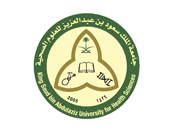Abstract
Purpose. This study was implemented to measure the self-reported factors contributing to student stress and anxiety levels and the strategies employed to navigate these stressors.
Methods. This study utilized a mixed method design for collecting and analyzing both quantitative and qualitative data to identify the trends and details of the complex learning environment of the Physical Therapist Assistant (PTA) students. Current enrolled students within a Physical Therapist Assistant program were invited to participate in this study. A survey was created to gather the data using Qualtrics and a link was distributed via their university email.
Results. This study explored the level and sources of self-rated perceived stress as well as identifying the coping mechanisms the PTA students are utilizing within the campus surveyed. The findings indicated that practical examinations followed by exams/quizzes caused the most perceived stress. The students reported that peer discussions, study groups and avoiding procrastination with preparing for practical examinations, were quite common coping mechanisms for stress.
Discussion. The above results indicate the need to offer a range of individual, curricular, co-curricular, and institutional stress management options for the students. Such interventions can focus on improving time management skills and prioritization of student daily activities. Physical therapy educators could include instruction about stress and burnout in the curriculum. By understanding the possibility and symptoms of burnout students can identify the symptoms of stress. Student behavior modifications such as relaxation or guided reflection can aid in test anxiety reduction.
Recommended Citation
Tarud, Gina; Labosky, Beverly A.; Cruz, Laura; Paranich, Nicole; and Thomas, Brian
(2021)
"It's Intense: A Mixed Methods Study of Student Stress in PTA Education,"
Health Professions Education: Vol. 7:
Iss.
1, Article 1.
DOI: https://doi.org/10.55890/2452-3011.1006
Available at:
https://hpe.researchcommons.org/journal/vol7/iss1/1



